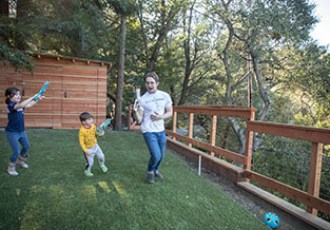BestReviews is reader-supported and may earn an affiliate commission. Details
We recommend these products based on an intensive research process that's designed to cut through the noise and find the top products in this space. Guided by experts, we spend hours looking into the factors that matter, to bring you these selections.

If you want to bring a dog into your home without all the responsibility — and mess — of a live animal, a robot dog is just what you need. Kids and adults alike can get hours of entertainment and companionship from a robot dog, but you must find the right pup to suit the owner. With a wide range of robot dogs on the market, how do you select the best one? You won't find just one perfect robot dog, so you'll have to select the one that's most suited to your needs and requirements, or those of the intended recipient.
Already starting to feel overwhelmed by choice? Well, you're in the right place. We at BestReviews aim to help you find the perfect products. We test items in our labs and in real-world situations, talk to expert consultants, and gather feedback from customers who already own these products.
We've compiled all this information into the following guide, so read on to learn all you need to know about robot dogs.

Most robot dogs are designed for one of three age groups — preschoolers, school-age children, or elderly people. Those designed for preschool are generally quite simple, and usually operated by remote control. Robot dogs for school-age children are more complex, generally capable of learning tricks, and responding to voice commands. Models intended for the elderly are realistic, responding to touch and voice, with realistic sounds, and sometimes even a heartbeat.
If you’re buying for a kid who'd actually like to have a real dog, he’ll probably want a robot dog that he can train. More advanced models gradually "learn" voice commands, such as "bark," "run," and "jump."

Some robot dogs are more interactive than others. The most advanced models can respond to your voice, learn vocal commands, follow you or watch you as you move, and react to being petted. The most simple models are more like remote control toys, and don't interact much at all.
You'll also want to think about your budget. Basic robot dogs can cost as little as $10 to $20, whereas those with more advanced features retail between $100 and $200.

Some robot dogs have sensors that allow them to navigate your home on their own, without bumping into walls or other obstacles.
You can find realistic-looking robot dogs that have fur, and respond to touch and voice, as well as robotic-looking models that aren't meant to appear realistic.
Not all robot dogs are as durable as others. Budget models are likely to be less sturdy, and have a shorter lifespan.
Some robot dogs are powered by remote control only, whereas others can respond to voice commands and touch.

Q. Why do many robot dogs have wheels instead of realistic legs?
A. The truth is, it's hard to make a robot that walks on legs quickly and realistically. The easiest solution is to come up with an alternative means of locomotion. That's why many robot dogs — especially more complex models designed to move around on their own — have wheels on the bottoms of their legs.
Q. How long will it take to train my robot dog?
A. This depends on the model. We expect it to take a couple of days for voice-controlled robot dogs to learn your speech patterns and start responding consistently. Some cheaper models, however, aren't as effective, and can take a frustratingly long time to train. That's why we recommend spending out a little more to get a reputable model.
Q. Can a robot dog be an effective companion for older people?
A. Loneliness can be an issue for the elderly. Pets can be great companions, but many elderly people aren't capable of fulfilling the needs of a pet, or they live in a nursing home where pets aren't allowed. While a robot dog isn't a real alternative to human companionship, some older people enjoy looking after the more realistic models, finding they reduce stress and loneliness.
Get emails you’ll love.
Learn about the products you’re wondering if you should buy and get advice on using your latest purchases.
